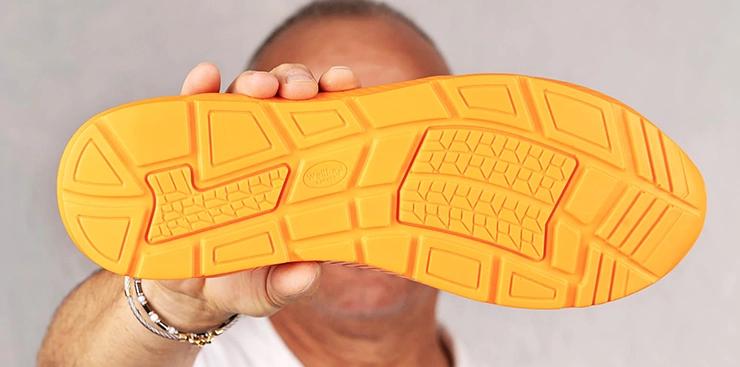
When it comes to footwear, we often focus on the upper part – the design, the material, and the overall aesthetic appeal. However, the foundation of any good pair of shoes lies in the sole. Shoe soles play a crucial role in providing comfort, support, and durability.
Materials Used to Make Soles:
Polyurethane (PU)
Known for its lightweight and shock-absorbing qualities, PU soles provide comfort without compromising on durability.
Advantages of polyurethane (PU) soles:
lightweight;
shock-absorbing;
durable.
Disadvantages of polyurethane (PU) soles:
lacks breathability;
less flexible than other materials;
poor grip on snow and ice.
Thermoplastic Polyurethane (TPU)
TPU soles are resilient and resistant to abrasion, making them suitable for outdoor and performance footwear.
Advantages of TPU soles:
resilient and abrasion-resistant;
suitable for outdoor use;
retains flexibility in cold temperatures.
Disadvantages of TPU soles:
poor thermal insulation and elasticity;
not lightweight.
Thermoplastic Elastomer (TPE)
TPE soles combine the flexibility of rubber with the durability of plastic, offering a versatile option for various shoe types.
Advantages of TPE soles:
flexible;
combines rubber-like properties with plastic durability;
good shock absorption and traction;
environmentally friendly.
Disadvantages of TPE soles:
loses its properties at high (over 122°F) and low (below -49°F) temperatures;
not suitable for safety shoes.
Polyvinyl Chloride (PVC)
PVC soles are cost-effective and easy to mold, but they may lack the durability and flexibility of other materials.
Advantages of PVC soles:
cost-effective;
easy to mold into various shapes.
Disadvantages of PVC soles:
lacks flexibility.
less durable;
low frost resistance (not suitable below -4°F).
Ethylene-vinyl Acetate (EVA)
EVA soles are lightweight, cushioned, and comfortable, making them popular for casual and athletic shoes.
Advantages of EVA soles:
lightweight and cushioned;
comfortable for all-day wear;
shock-absorbing.
Disadvantages of EVA soles:
wears out faster;
slippery and not frost resistant;
not suitable for winter.
Leather
Known for its premium feel, leather soles offer a sophisticated touch and excellent breathability, though they may wear out faster than some synthetic options.
Advantages of leather soles:
premium look and feel;
breathable.
Disadvantages of leather soles:
easily subject to deformation;
requires much more careful care (sprays, cremes, impregnations, etc.);
not suitable for wet and rainy weather.
Tunit
Being a synthetic material, tunit offers a balance between durability and flexibility, making it suitable for a variety of shoe styles.
Advantages of tunit soles:
balances durability and flexibility;
versatile for various shoe styles;
almost never wash off or get wet.
Disadvantages of tunit soles:
very slippery due to its high rigidity;
suitable only for spring/summer footwear.
Wood
Wooden soles provide a unique aesthetic and are often used in fashion-forward footwear, though they may lack the comfort of more modern materials.
Advantages of wooden soles:
original appearance and unique aesthetic;
low price.
Disadvantages of wooden soles:
wears out quickly;
poor water resistance;
subject to quick deformation;
limited flexibility;
much less comfortable to wear.
The post Comprehensive Guide to Shoe Soles appeared first on The Fashiongton Post.
